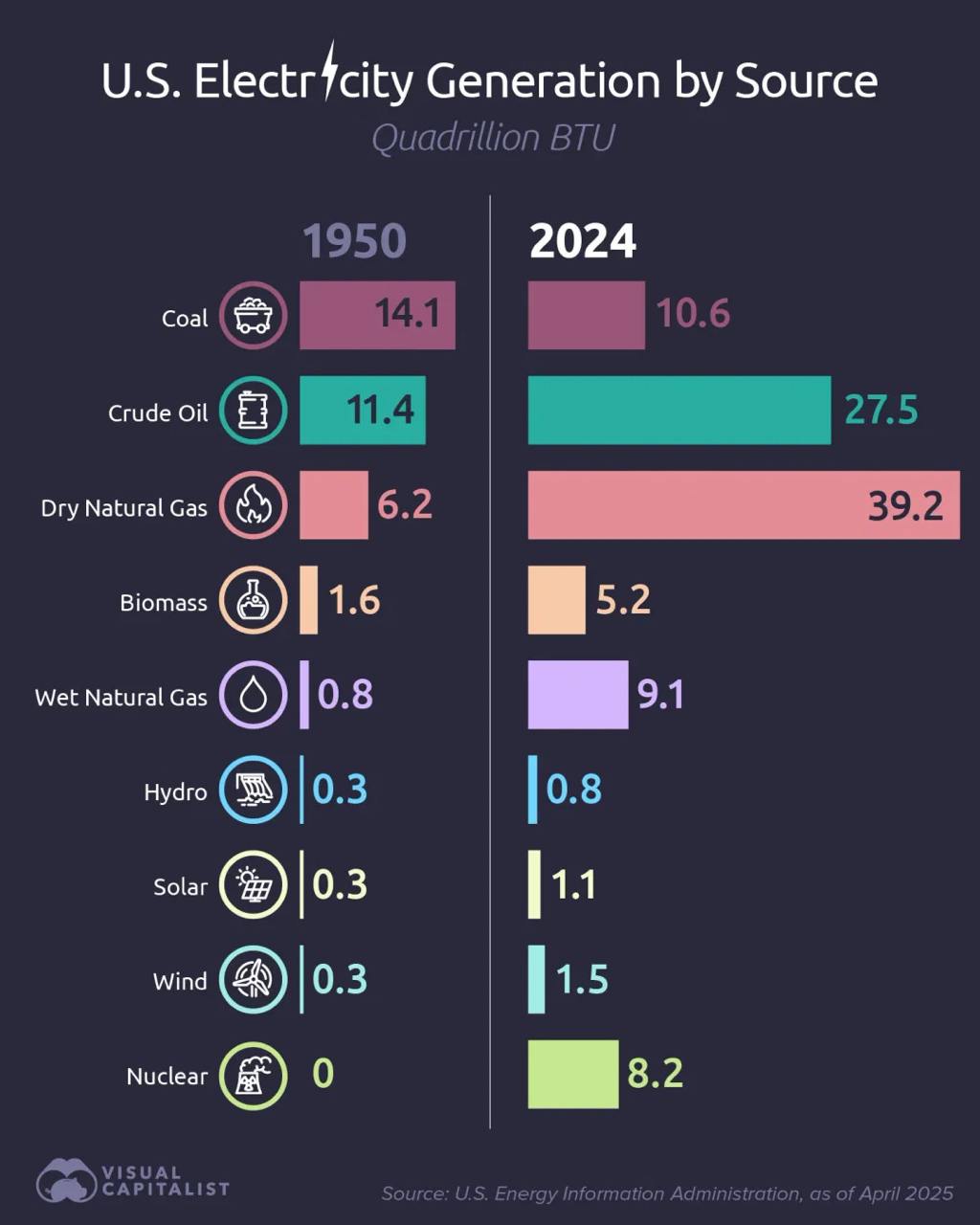Natural gas has quietly become the heavyweight champion of America’s energy landscape, defying expectations that renewables or other fossil fuels like oil and coal would dominate. According to data from the U.S.
 Energy Information Administration (EIA), natural gas has shown the most remarkable growth in energy consumption since 1950, soaring from 6 quadrillion British thermal units (Btu) to an estimated 39 quadrillion Btu by 2024. This meteoric rise has positioned natural gas as the leading energy source in the United States, surpassing both coal and oil in a way few could have predicted decades ago.
Energy Information Administration (EIA), natural gas has shown the most remarkable growth in energy consumption since 1950, soaring from 6 quadrillion British thermal units (Btu) to an estimated 39 quadrillion Btu by 2024. This meteoric rise has positioned natural gas as the leading energy source in the United States, surpassing both coal and oil in a way few could have predicted decades ago.
Back in 1950, natural gas accounted for just 18% of U.S. primary energy consumption, a distant third behind coal (37%) and petroleum. Fast forward to 2023, and the EIA reports natural gas consumption at 33.61 quadrillion Btu, making up 36% of the nation’s total energy use.
By 2024, projections based on historical trends and EIA forecasts suggest this figure has climbed to around 39 quadrillion Btu, driven by increased demand in the electric power sector, which consumed 41% of U.S. natural gas last year. This growth isn’t a fluke—it’s the result of technological advancements like shale gas extraction, which has unlocked vast domestic reserves, making the U.S. a net exporter of natural gas since 2017.
 Meanwhile, coal has crumbled, dropping from 37% of energy consumption in 1950 to a mere 9% in 2023, with consumption falling to 8.2 quadrillion Btu — the lowest since 1900. Petroleum, while still significant at 35.43 quadrillion Btu in 2023, has remained below its 2005 peak and is primarily tied to transportation rather than electricity generation.
Meanwhile, coal has crumbled, dropping from 37% of energy consumption in 1950 to a mere 9% in 2023, with consumption falling to 8.2 quadrillion Btu — the lowest since 1900. Petroleum, while still significant at 35.43 quadrillion Btu in 2023, has remained below its 2005 peak and is primarily tied to transportation rather than electricity generation.
Natural gas, on the other hand, has become the backbone of U.S. electricity, overtaking coal in 2016 and reaching a record 41% of power production in 2023, outpacing solar, wind, hydro, and coal combined.
What’s driving this? Efficiency in extraction, like hydraulic fracturing, has boosted production from shale formations, leading to record highs — U.S. dry natural gas production has exceeded consumption since 2017. Lower prices have made gas more competitive, especially against coal, which has seen a 17% consumption drop in 2023 alone.
Renewables are growing, reaching 8.24 quadrillion Btu in 2023, but they still lag far behind gas at 9% of total consumption. Even nuclear, at 8.1 quadrillion Btu, can’t keep up.
 Also read:
Also read:
- Flux Kontext: The Photo Editor That’s Shocking Journalists and Helping Teens Procrastinate
- Washington Metro’s Credit Card Payment Launch Goes Off the Rails at Press Conference
- Tinder Tests Height-Based Matching for Gold and Platinum Users, Sparking Backlash
The narrative often pushes renewables as the future, but the numbers tell a different story: gas is king. It’s not just about electricity — natural gas is also critical for industrial processes and heating, making it a versatile giant.
While activists might chant “no gas,” the reality is that 73% of U.S. emission reductions since 2007 have come from switching from coal to gas, not from wind or solar.
Gas rules America, and it’s not stepping down anytime soon.






